
Anyone who takes off from Liberia heading to a foreign land helps Guanacaste take care of its centuries-old buildings or build new parks for Sunday strolls.
Or at least that’s how it should be, according to Law 9156, which, since 2013, guarantees that a portion of the exit tax collected by the Liberia Airport is used for tourism infrastructure or national heritage projects. But, in Cañas and Bagaces, the impact of this revenue still isn’t visible.
In five years, Cañas has used only 16.5 percent of the budget they’ve received from the airport, while Bagaces has spent 52.5 percent ($300,000 and $250,000 million in total, respectively). Both cities collected millions for years. In some cases, it’s due to poor planning. In others, they are waiting to collect enough for a bigger project focused on a single district in the canton.
The law provides Guanacaste with $3.50 for every $27 that each person pays in exit taxes when the fly out of the Liberia airport —the amount is automatically included when tickets are purchased.
The Finance Ministry distributes the money as follows: 10 percent for city federations and confederations; 38.6 percent for the city of Liberia and 51.4 percent in equal parts for the ten remaining city governments. According to the bylaws, these resources can only be used to finance tourism infrastructure and national heritage restoration,
This is one of the findings of GuanaData, a project by The Voice of Guanacaste that seeks to increase transparency in city governments through budget analysis. In this third edition, we focused on Bagaces y Cañas.
While both cantons roll over budgets and have focused on tourism projects, they are in different situations.
[Help us continue investigating the stories that matter to you. Donate today].
Cañas: Projects without Planning
Cañas was the canton that spent the least money in the last five years. Of the ¢180 million it received in total, it only invested ¢30 million (16%).
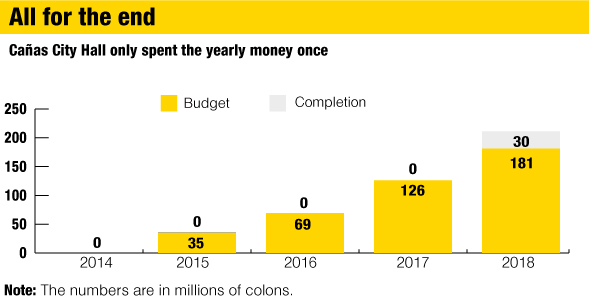
And yet their annual budget has included a section to improve cultural heritage sites. For example, in 2015, Cañas planned to repair the tower at the central church. In 2016, it planned to protect the Piedra del Sol archeological monument and create a city dance and orchestra workshop. But, it eliminated the plans after failing to spend the money in the following years. In other words, the money didn’t re-appear in the years that followed.
Budget manager Manuel Campos said that the city had planned to fix the tower with $25,000, but three years after having included it in the budget, they decided that the money wasn’t enough.
“The person in charge of doing the work (the builder) went to check and said that the tower needed work on everything, so the job became much more expensive,” Campos said.
Instead, they built a 100-meter iron gate around the church for $50,000. Currently, the church tower is closed, according to the official.
The protection of Piedra del Sol was abandoned because it’s on land that belongs to the Ministry of Energy and Environment and the city doesn’t have permission to intervene, according to Campos.
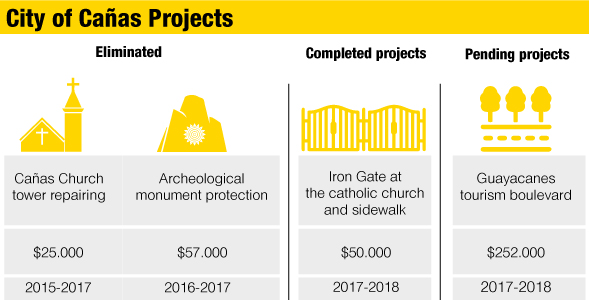
Now, the main project the city is building is a tourism boulevard called “Los Guayacanes” with ¢150 million that it has rolled over for four years. The city plans to add the airport revenues to this project for 2019, for a total of ¢219 million. But they still don’t have a date to start construction on the boulevard.
Angie Díaz, director of projects in Cañas, told The Voice of Guanacaste that the boulevard will have a T shape and will extend from the east side of the central church to the Colon Plaza and from the bull ring to the sports complex.
Díaz said that the city had accumulated, intentionally, the ¢150 million from the boulevard because the money available isn’t enough for the whole project and it’s not practical to do the job in parts.
“The idea is to project the canton more because Route 1, people go directly to Liberia. The idea is that cars see that there is something in Cañas and they get curious, we want them to stay in Canas,” Diaz said.
Bagaces All for Llanos del Cortés
The city of Bagaces received 165 million and used almost 87 million (52%) but it lost 63 million that it made in 2017 because the Comptroller’s office didn’t approve their budget.
The head of budgets for Bagaces, Alonso Gonzalez explained that the city didn’t do the procedure with enough time and missed the opportunity to appeal to the comptroller’s ruling in order to invest the airport revenue.
While he admits that there was a lack of planning, he said that there is also “a lot of work.”
“We don’t have a planner that can make a cantonal human local development plan or a strategic city plan. We do it between several colleagues or with involved posts.”
“That makes the risk increase in order to spend on the projects we want,.”
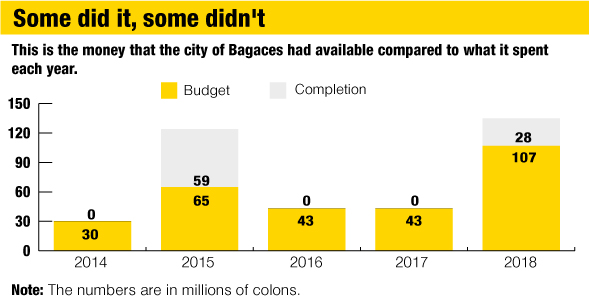
Since 2014, Bagaces has used all the airports’ revenue to brighten the Llanos del Cortes, but it still hasn’t concreted four of the 11 projects that it planned for the area.
District representative José Pablo Trejos said that it’s time to start investing the budget from the airport in other projects because Llanos del Cortés can finance itself via visits.
In the 2019 budget, the city included two projects in other districts. One is a tourism post in Guayabo and a park in Rio Naranjo.
“The entrance to the canton of Bagaces is Rio Naranjo and it doesn’t have anything to receive tourism. In Mogote we are going to give out tourism information and a map with all the destinations because the zone is receiving a lot of tourism related to hot springs and trails.”
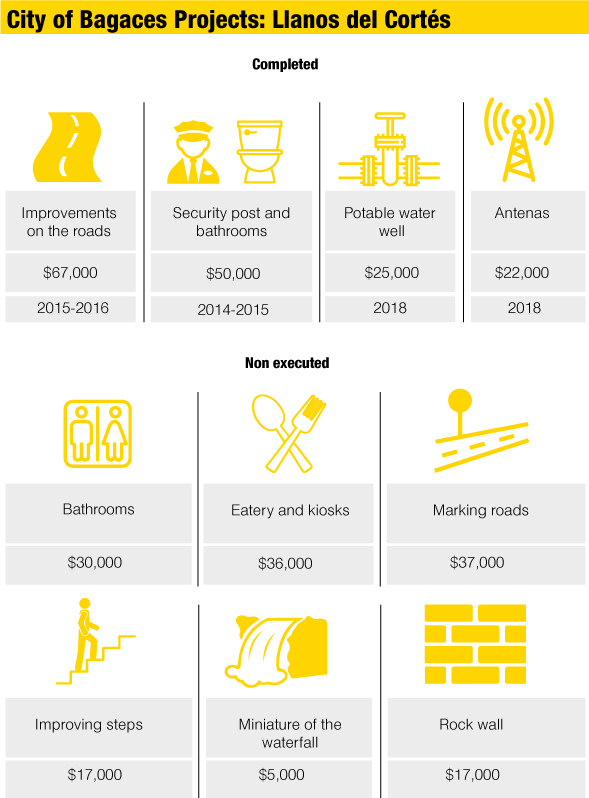


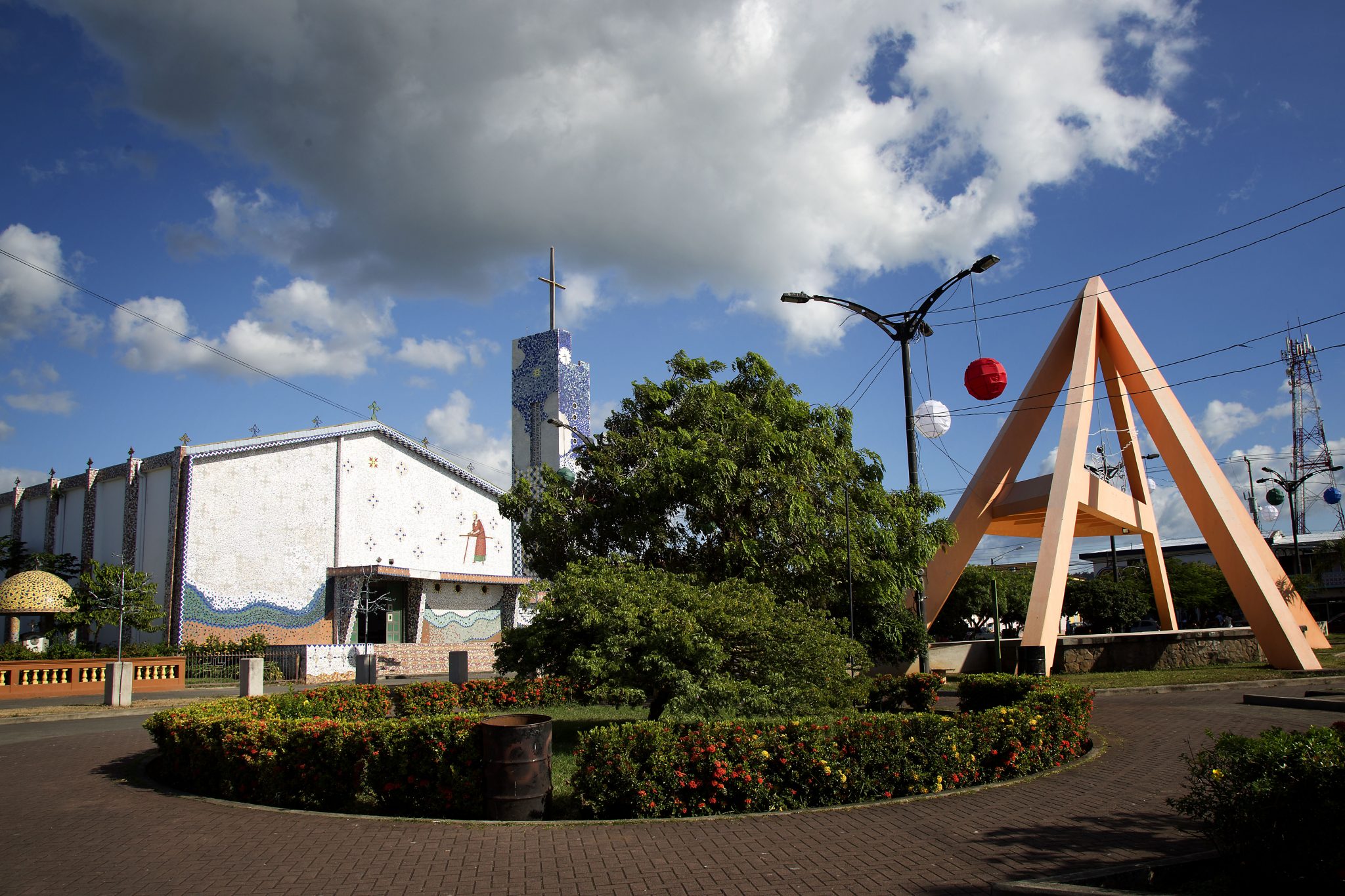


Comments